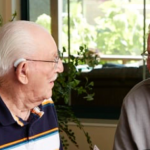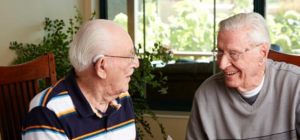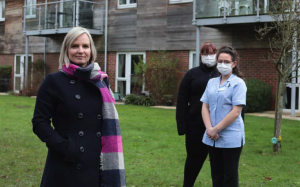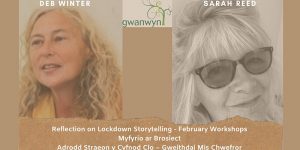
Let’s consider drawing as a means of remembering and telling our stories
Sarah Reed
February 2023
MAPPING STORIES
All the creative arts can bring solace and reassurance, as well as fun to our lives. Being sharing experiences, for a person living in the midst of the existential loneliness that is dementia, they can be an important part of what makes life worth living.
When enjoying time with a person living with dementia, I always try to make sure I’m sitting alongside rather than opposite them, so that we can observe the world (and do things) together – but still connect with one another in a warm and friendly way. Sitting at, say, a kitchen table together, with a cup of hot tea or coffee offers an atmosphere of conviviality and enjoyment.
MARK MAKING
Having pencils, crayons and fresh paper to hand can be useful, so that the person can express themselves with writing or drawing if they would like to. There is always much to learn. I might suggest, “let’s draw something together … how about a face… a flower… a house… a tree…” Though I say ‘together’, the drawing is always theirs, my role is merely to admire, enquire, support and occasionally nudge a little. Drawings are helpful because they so often lead to conversations. Many people think that they can’t draw, but in my experience this is rarely true and anyway, it’s about creating participation, not great art. Generally, what’s needed is some sincere encouragement.
Judging anything a person draws is an absolute no-no – the aim is to tempt them to express themselves however they would like to, as freely as they can. That means they need to feel safe and good about themselves. An enthusiastic, upbeat “that’s so interesting / lovely / great!” is almost the only opinion anyone wants to hear.
The (academic) quality of the drawing is entirely irrelevant, what matters is the process, which offers a form of expression that doesn’t require words. This is definitely NOT a competitive activity. Apart from the general enjoyment it offers, if anything, it’s about providing meaningful engagement and pleasure, while helping open windows onto the person’s past and hopefully, building their self-esteem.
ASKING QUESTIONS
I might ask questions about a drawing, like “how did that feel?” or “is that you?… or someone you know? … tell me about it…”; or, with a nature drawing, “what are your favourite flowers/trees/places?” or “tell me more…”. The point of drawing is to draw the person out (no pun intended) and give them an opportunity to share an experience of something, someone or somewhere. Their drawing is their drawing, so I’d never invade it, adding nothing but the date as a record.
MAPMAKING
Some years ago, I met a lady with vascular dementia who had lost much of her language, so communication was a struggle. Intrigued to know about her life, I suggested that she might like to draw a map of her house and street in the south coast town where she had lived. Starting tentatively, with some positive nurturing and admiration, she grew in confidence. A complex and fascinating drawing grew in scale over time to include other roads and familiar landmarks like the park, her school, the church, shops and so on.
These features gave her an opportunity to share stories from her past and gave me an insight into some subtle aspects of her childhood that I could never have known: her love of dancing and her close attachment to her aunt, who taught her. It was wartime and the map included elements of social history: a harbour with naval ships, a big old house billeted for Royal Navy crewmen and wonderful small details, like drawings of apples from her mother’s garden which they shared with the sailors.
GROWING THE MAP
The original piece of A4 paper wasn’t large enough for all the details, so we just extended it by taping extra sheets on at random angles as they were needed. Finally, we attached a few early photos as well, creating what became for her, a map of her emotional childhood geography.
As it developed, weekly, over a couple of months, sharing the pleasurable memories boosted her mood, her memories and her sense of self-worth, enriching her relationship with her daughter – and of course, ours, too.
What might your map look like, I wonder…?





No comment yet, add your voice below!